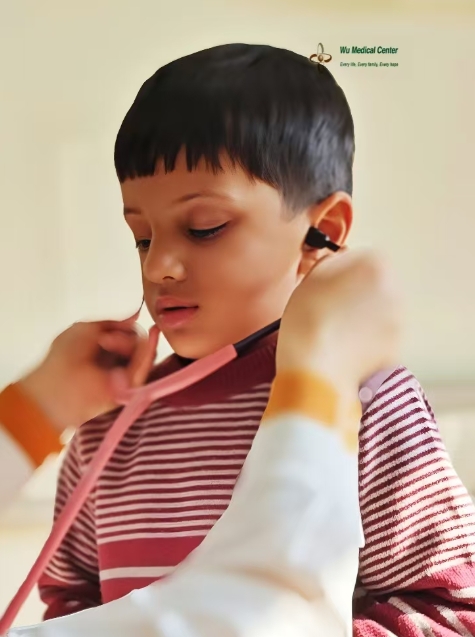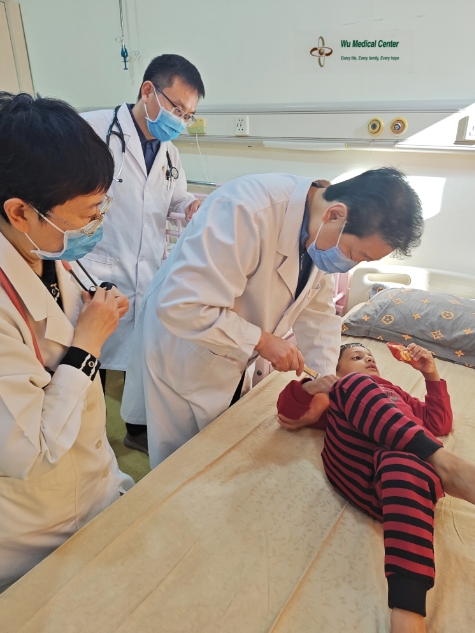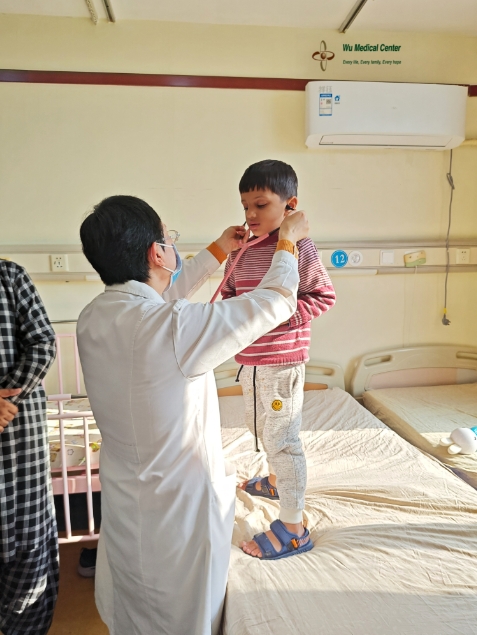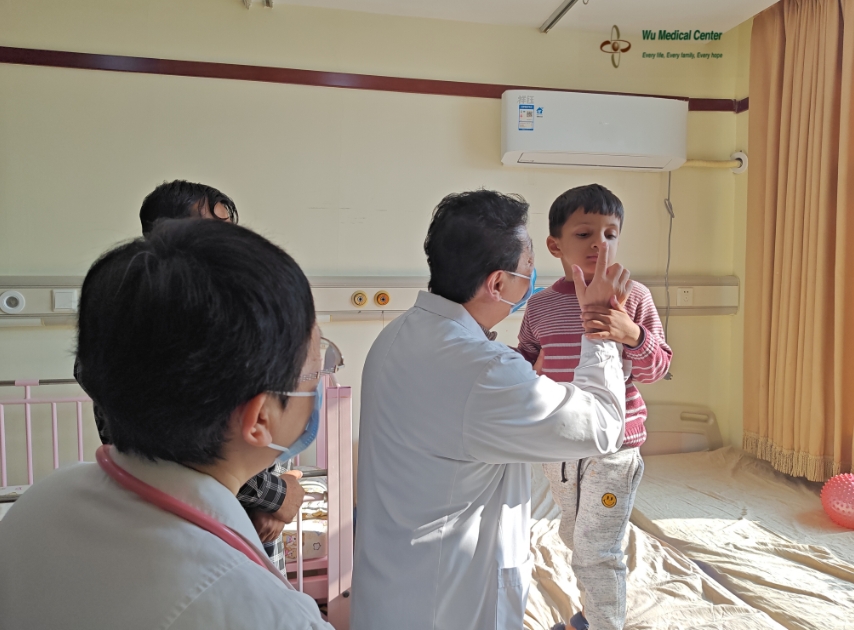Muhammad Ansar-Ischemic-hypoxic brain injury-(Pakistan)
 Patient Name: Muhammad Ansar
Patient Name: Muhammad Ansar
Gender: Male
Age: 4 years old
Nationality: Pakistan
Diagnosis: Ischemic-hypoxic brain injury
Condition at Admission:
The patient has ischemic-hypoxic brain injury, which has resulted in an inability to speak since birth. He exhibits hyperactivity, restlessness, and lack of attention; he could not make eye contact or physical contact with others, and his learning ability was extremely low. His sleep and bowel habits are normal. Medical History: The patient was a premature birth (9 months) and was delivered vaginally, requiring oxygen therapy at birth.
Physical Examination upon Admission:
The patient's blood pressure is 98/62, and heart rate is 90 beats per minute. His height is 107 cm, and weight is 20 kg. His development and nutrition are normal. Breath sounds in his both lungs are clear, with no dry or wet rales heard. His heart sounds are strong and rhythmic, with no murmurs detected in the auscultation areas of the valves. His abdomen is soft, and the liver and spleen are not palpable below the ribs.
Neurological Examination:
The patient was alert and hyperactive. He had no verbal communication. He was hyperactive. He was unable to cooperate with orientation, memory, and comprehension assessments, and he could not concentrate. Both of his pupils are 3.0 mm in diameter, and they react sensitively to light; his eye movements are agile, and there is no nystagmus. His forehead wrinkles are symmetrical, and his tongue is centered. Elevation of the soft palate is normal on both sides. Muscle strength in his all four limbs is rated at 5, and muscle tone is normal. Tendon reflexes in his limbs are diminished. The left Babinski sign is positive, while the right Babinski sign is negative. He is uncooperative during the sensory system examination. He is also uncooperative during the coordination assessment. His signs of meningeal irritation are negative.
Treatment Process:
The patient was admitted with a definitive diagnosis of "ischemic-hypoxic brain injury." He was treated with a combination of neural stem cells, mesenchymal stem cells, and CAST therapy to increase the number of brain nerve cells, repair nerve damage, improve cerebral blood circulation, regulate immunity, and nourish brain nerves, along with comprehensive rehabilitation therapy.
After Treatment:
The patient’s condition has significantly improved. His reaction time has increased, and he can concentrate for longer periods. His learning ability has improved, and his comprehension skills have increased, along with enhanced ability to follow instructions and greater cooperation. His self-control has improved, and his emotional stability has noticeably increased. His hyperactivity has significantly decreased, allowing him to engage in eye contact and physical communication with others and the outside world. He has increased his vocalizations, producing single words such as "Mam" and "No." With the enhancement of neural stem cell function, the child is expected to make even more progress in the future.



